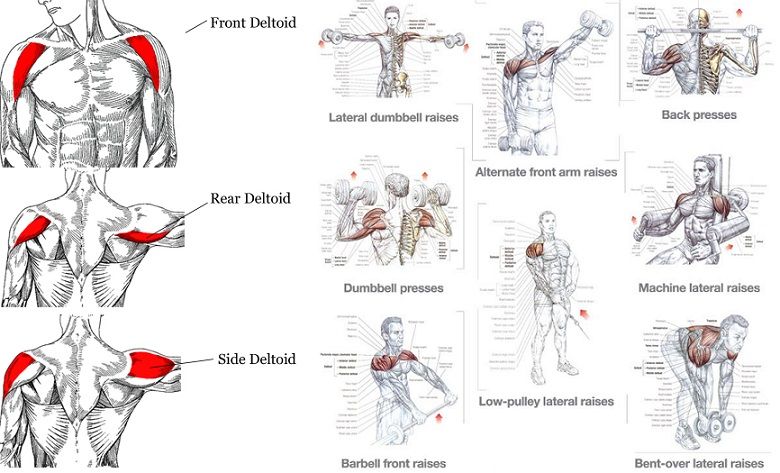Ever wondered which movements should be the foundation of an effective full body workout?
We have. And we got the answer. When it comes to creating a well-rounded, powerful training program, the following four types of exercises are the foundation you simply can’t go on without.
It goes without saying that you should train each body part equally and often enough to keep your body in balance and stay injury-free.
Overworking or underworking certain muscle groups creates muscle imbalances which kill aesthetics but more importantly, pull your body out of whack and lead to issues such as tendinitis, rotator cuff injuries, back pain, and much more.
This point has been explained to death many, many times by fitness experts and physiologist around the world, yet many gym goers still tend to tailor their workouts according to their personal taste or the latest training fads, or simply perform the exercises they “feel” like performing.
That approach, naturally, can only result with minimal or zero gains and growing muscular imbalances.
So what can you do?
Start by making sure that these four movements are the cornerstones of your workout!
The Fantastic Four
1. Upper-Body Push
Upper-body push exercises use the muscles of the chest, front of the shoulders and back of the arms to push or press an object away from the body or the body away from an object.
These moves, which include bench presses, push-ups, overhead presses and landmine presses, work your muscles as you extend the elbow joint.
While they’re often the go-to movement for building upper body strength, pushing movements do double duty – they also promote good posture and prevent back pain by powerfully toning the muscles of your core.
2. Upper-Body Pull
Upper-body pull movements, on the other hand, target the muscles of the back, back of the shoulders and biceps, using them to pull or row an object toward the body or the body toward an object.
Stellar examples of this type of movement are chin-ups, all kinds of rows and rope climbs.
Regularly training your posterior chain muscles with the help of pulling movements will greatly increase your athletic prowess.
In addition, regularly performing pulling movements will also improve your ability to do pushing movements.
3. Knee-Flexion Movements
These include movements which involve significant knee flexion and primarily work the quads, glutes and hams.
We’re talking about the classics here: squats, lunges, step-ups and vertical jumps.
Apart from mass and strength building, performing these exercises will help you build strong, fluid and solid muscles around the knees and in your core, thus enabling you greater flexibility and mobility while preventing injury.
This will in turn improve your overall athletic performance and help you reap more gains with every workout.
Most fitness experts recommend the squat as the one exercise people should do every day if they had no time for anything else.
4. Hip-Hinging Movements
Hip-hinging movements, such as the mighty deadlift and all of its variations, glute-ham raises, hip thrusts and sprints, are one of the primal movement patterns of humans which primarily target the posterior chain.
The hip hinge involves an extension movement that originates in the hips and involves a posterior weight shift.
It is the fundamental movement pattern for the deadlift, as well as the kettlebell swing, Romanian deadlift and explosive barbell movements like cleans and snatches.
If you don’t devote enough time and attention to proper execution of hip-hinging movements, you’ll be missing out on a plethora of amazing benefits and increase the risk of serious injury while performing heavy lifts.
Now that we’ve got the basics covered, you can move on to determining the specifics of your full body routine.
Just remember to focus on pushing, pulling, flexing the knees and hinging at the hips and you’ll have a solid foundation for a maximally effective workout.
And the next time you get the urge to skip your push-ups, chin-ups, squats or deadlifts, not only should you resist it, but you should also add an extra set, preferably heavy, and thoroughly shake any remaining dormant muscle fibers!
Good luck!
